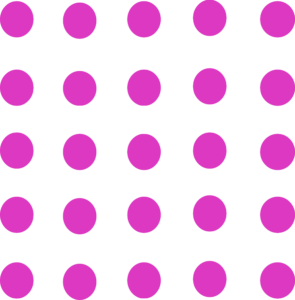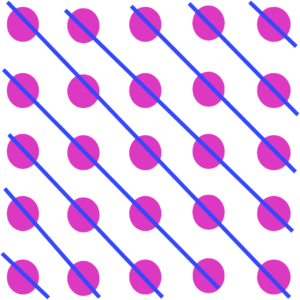The array

contains dots, arranged in 5 rows and 5 columns.
We can view the array as consisting of a series of disjoint diagonals:

Counting the dots in the diagonals we get
which, looked at another way, says
.
Of course, there’s nothing special about 5: we can see by looking at an square array of dots that
and, more generally, if is any positive integer then
.
Seeing a square array of dots as a series of diagonals is key to understanding, and proving, that
for any positive integer .
This idea is a small, yet significant, step in awakening a developing mathematical brain.
